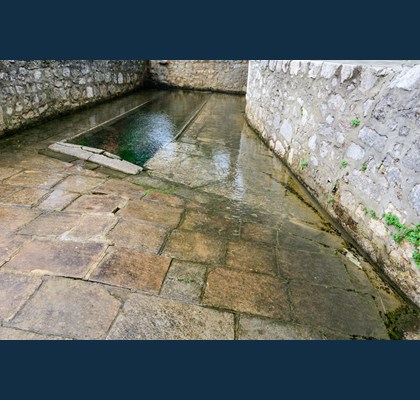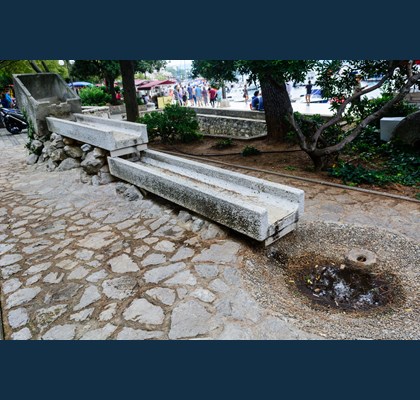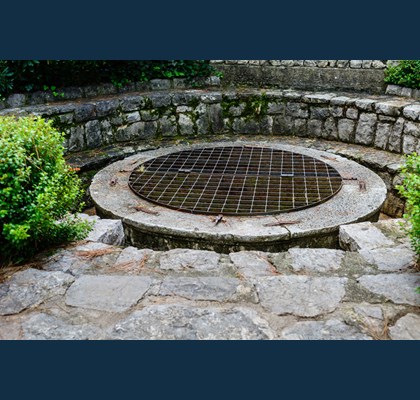Style period: classicism
Century: 19 A.D.
Potable water is extremely significant to the city, so it is no wonder that this spring of potable water has been mentioned ever since the 13th century. In 1554, the provveditore Mapheo Girardo wrote to the Venetian Doge praising the source, emphasizing how it could satisfy the needs of all the armies in the world. However, Krušija is also related to two problems, both referring to the location of the source. First of all, the source is situated outside the city walls, which means that in case of an attack, the city is vulnerable, because the people cannot be supplied with potable water. Secondly, during strong scirocco and flood tide, owing to its location close to the sea, the source was often mixed with sea water. The Krk Statute from the 13th century strictly defined the maintenance of the well and the area around it. It also stipulates how the source should be taken care of and the person responsible for that. The financing of its maintenance is also defined in the statute, as the funds earned by renting the district pastures on Prniba were invested into the maintenance of Krušija. Cattle were also brought to the source, but it could not use the well. The stone trough, which can still be found at its original place (in situ) was intended for cattle.
The area of the spring and the so called krušija (wash trough) is conserved today and under the protection of the Conservation Department. Although it is no longer used for its original purpose, it is an important historical location where just a few decades ago people washed their clothes and where a large part of the social life evolved.
Bibliography:
- Lesić, Denis, Grad Krk – mala monografija velikog grada, Aquanet, Krk, 2005.





